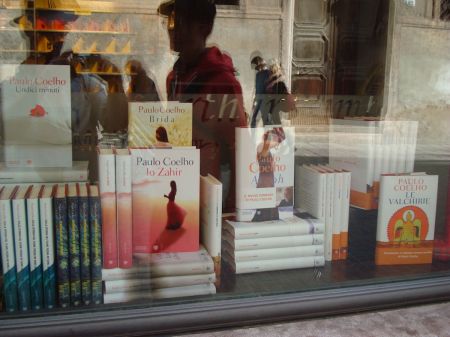Slow fashion is not a seasonal trend that comes and goes like animal print, but a sustainable fashion movement that is gaining momentum. — Jessica Bourland
Fast fashion is greed.
Fast fashion is exploitation.
Fast fashion is sweatshop factories, one factory pitted against another factory, one country pitted against another country.
Fast fashion externalises costs, destroys the environment.
Fast fashion is global corporations brainwashing sheep-like individuals that they must all look the same, dress the same, think the same.
Fast fashion is disposable clothes, wardrobes that must be emptied and replenished every four months.
Fast fashion, cheap clothes, clothes that are too cheap to repair, too cheap even to launder, come with a very high price tag.
Slow fashion is style.
Slow fashion is clothes we look good in.
Slow fashion is small artisan designers and dressmakers, who use natural materials.
Slow fashion is organic.
Slow fashion is Fair Trade
Slow fashion is taking unwanted clothes to charity shops to be recycled, buying clothes from charity shops.
Slow fashion is worth caring about, worth repairing, worth laundering.
Slow fashion treads lightly on the planet.
Slow fashion is sustainable.
‘Slow fashion’ was coined by Kate Fletcher. It has evolved from slow food, is part of the slow movement.
In The Winner Stands Alone, Paulo Coelho has a brilliant critique of fast fashion.
It is all about image, be it wearing the latest fashion or consuming a can of coke. We think we are in control of our own destiny, but we are not, we are being manipulated by con men.
Fashion. Whatever can people be thinking? Do they think fashion is something that changes according to the season of the year? Did they really come from all corners of the world to show off their dresses, their jewellery and their collection of shoes? They don’t understand. ‘Fashion’ is merely a way of saying: ‘I belong to your world. I’m wearing the same uniform as your army, so don’t shoot.’
Ever since groups of men and women first started living together in caves, fashion has been the only language everyone can understand, even complete strangers. ‘We dress in the same way. I belong to your tribe. Let’s gang up on the weaklings as a way of surviving.’
But some people believe that ‘fashion’ is everything. Every six months, they spend a fortune changing some tiny detail in order to keep up their membership of the very exclusive tribe of the rich. If they were to visit Silicon Valley, where the billionaires of the IT industry wear plastic watches and beat-up jeans, they would understand that the world has changed; everyone now seems to belong to the same social class; no one cares any more about the size of a diamond or the make of a tie or a leather briefcase. In fact, ties and leather briefcases don’t even exist in that part of the world; nearby, however, is Hollywood, a relatively more powerful machine – albeit in decline – which still manages to convince the innocent to believe in haute-couture dresses, emerald necklaces and stretch limos. And since this is what still appears in all the magazines, who would dare destroy a billion-dollar industry involving advertisements, the sale of useless objects, the invention of entirely unnecessary new trends, and the creation of identical face creams all bearing different labels?
How perverse! Just when everything seems to be in order and as families gather round the table to have supper, the phantom of the Superclass appears, selling impossible dreams: luxury, beauty, power. And the family falls apart.
The father works overtime to be able to buy his son the latest trainers because if his son doesn’t have a pair, he’ll be ostracised at school. The wife weeps in silence because her friends have designer clothes and she has no money. Their adolescent children, instead of learning the real values of faith and hope, dream only of becoming singers or movie stars. Girls in provincial towns lose any real sense of themselves and start to think of going to the big city, prepared to do anything, absolutely anything, to get a particular piece of jewellery. A world that should be directed towards justice begins instead to focus on material things, which, in six months’ time, will be worthless and have to be replaced, and that is how the whole circus ensures that the despicable creatures gathered together in Cannes remain at the top of the heap.
What are people buying into, what are they paying a high price for? It is not the designer on the label as the design will have been by a young designer who wants out to set up his own label. It will have not even have been made by the company, it will have come from some Third World sweatshop, a dollar or less at the factory gate, one hundred dollars or more retail. All that people are paying for is the label, the brand name.
Not to be confused with buying real luxury, quality, for example a Montegrappa pen made by craftsmen, for when we buy something of quality, we tend to cherish it and keep it for life.
Top Story in Lemondade (Sunday 1 April 2010).
– Montegrappa launch The Alchemist pen
– Disposable clothes
– Killer Jeans
– What is Slow Fashion?
– Slow fashion
– ‘Slow fashion’ is a must-have … and not just for this season
– Slow it Down: Fast Fashion vs. Slow Fashion
– Perfect Purses
– The Story of Stuff










